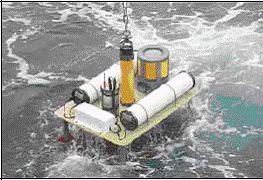Tsunami Warning System
Published on Aug 15, 2016
Abstract
Tsunamis consist of a series of very long waves generated by any rapid, large-scale disturbance of the sea. Most are generated by sea floor displacements from large undersea earthquakes.
Tsunamis can cause great destruction and loss of lives within minutes on shores near the source, and some tsunamis can cause destruction within hours across an entire ocean basin.
Most tsunamis occur in the Pacific region but they are known to happen in every ocean and sea. Although infrequent, tsunamis are a significant natural hazard with great destructive potential. They can only be dealt with effectively through programs of warning, mitigation, and education
Introduction of Tsunami Warning System
Development of an operational tsunameter was an extraordinary engineering accomplishment. The task was to design, develop, test, and deploy real-time reporting, deep ocean instrumentation capable of surviving a hostile ocean environment while performing with the quality and reliability demanded of an operational tsunami warning system. To measure tsunamis many technologies has been tested.
At present the best way known to detect a tsunami is to measure very accurately water pressure on the sea bottom. The tsunami detection algorithm works by first estimating the amplitudes of the pressure fluctuations within the tsunami frequency band and test these amplitudes against a threshold value.
The pressure acquisition station is a critical component of the tsunameter system and includes an ultra stable, high precision, high accuracy, pressure depth sensor, a computer, a data logger and an acoustic modem to communicate with surface buoy. The remarkable performance of depth sensor is achieved through the use of a precision quartz crystal resonator whose frequency of oscillation varies with pressure-induced stress. A quartz crystal temperature signal is provided to thermally compensate the calculated pressure and achieve high accuracy over a broad range of temperatures. The depth sensors include waterproof housings with integral shock protection buoy.
The bottom pressure recorder (BPR) is a critical component of the tsunameter system and includes a Digiquartz Broadband Depth Sensor, a computer, data logger and an acoustic transducer to communicate with the surface buoy

. Tsunameter BPR
The Digiquartz Broadband Depth Sensor is the main sensing element in the bottom pressure recorder. This sensor monitors pressure continuously and if the pressure reading changes above a set threshold, then the tsunameter automatically transmits data to a surface buoy. The surface buoy makes a satellite connection to Tsunami warning centers that evaluate the threat and issue a tsunami warning.
The most important sensing requirement is the detection of very small pressure changes at water depths up to 6000 meters. The change in water depth due to a tsunami in the open ocean is generally less than one centimeter. The resolution capability of Digiquartz Broadband Depth Sensors makes it possible for tsunameter to detect water level changes of less than one millimeter at the deployed depth of 6,000 meters (one part in six million).
Related Seminar Topics
- Code Division Duplexing
- Combating Link Spam
- Compact Peripheral Component Interconnect (CPCI)
- Computational Visual Attention Systems
- Computer Memory Based on the Protein Bacterio-rhodopsin
- Computerized Paper Evaluation using Neural Network
- Compute Unified Device Architecture CUDA
- Conditional Access System
- corDECT Wireless in Local Loop System
- CorDECT